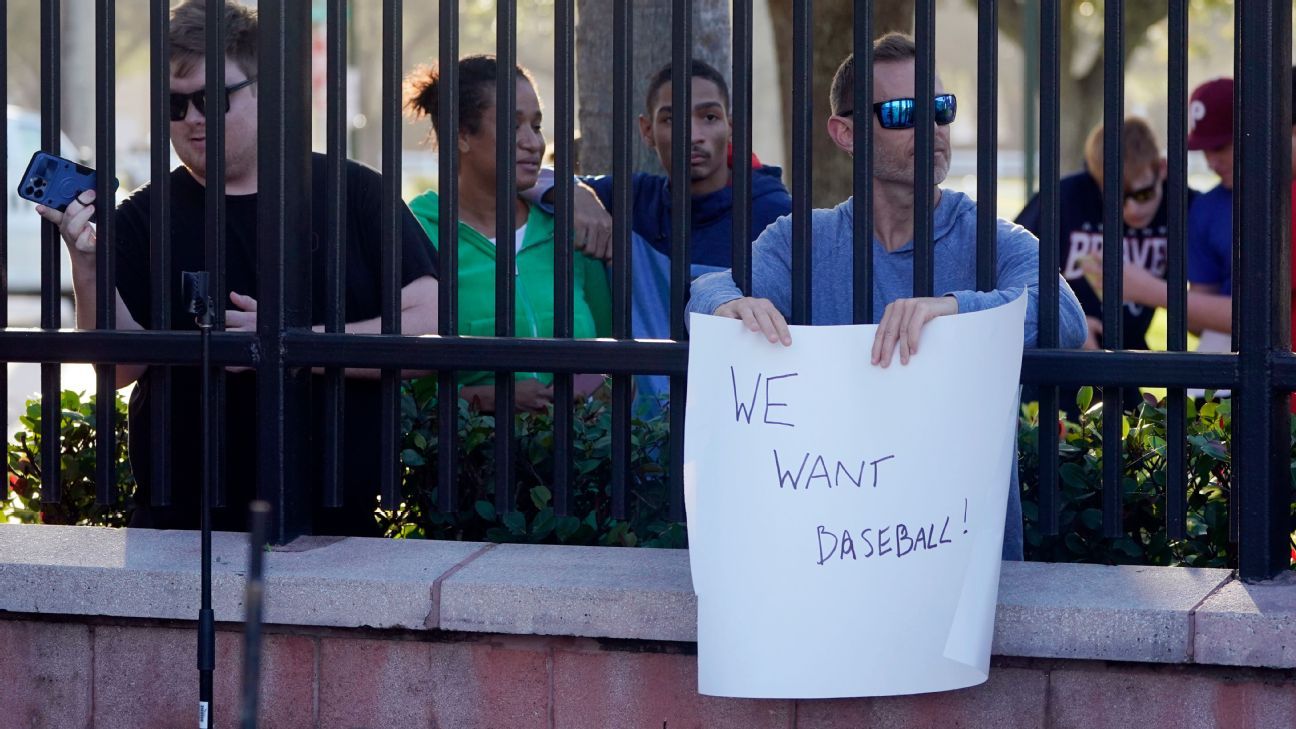It will be no MLB games until at least April 14.
Talks between Major League Baseball’s and the MLBPA ended on Wednesday. The league then cancelled the second week 2022 regular season.
What is the distance between the sides when it comes to negotiating a new collective agreement? What should fans do about the sport’s short-term and long-term future?
Here are the five most important questions about the MLB lockout continues.
The earliest the season can begin is April 14th. Is it possible that we will see baseball on April 15, the 75th anniversary Jackie Robinson’s MLB debut?
The good news? There have been substantial improvements, particularly in core economic issues. It’s possible to play regular-season baseball April 15th, as most of the season is still salvageable. Executives and agents fear that negotiations will be delayed if the tone turns hostile after Wednesday’s incident. The league gave players multiple deadlines, after which they would not be paid full pay. It has also moved them several times. MLB has not yet confirmed that players will be paid for the full season. This adds to the tension.
Is a complete 162-game schedule for this season possible after four cancelled series?
It’s not always the case, but the league is moving into new territory. The 1990 lockout stretched into mid March, pushing Opening Day back by a week, and prolonging the regular season for three days. This season has been delayed by two more weeks. The problem is that there was no interleague play in 1990, so it will be even harder to make up these series this year. Although it is possible to play 162 matches if an agreement can be reached soon — 7-inning doubleheaders would likely be the norm — the chances of playing a full year are significantly reduced if talks were ended Wednesday without any agreement.
What was the main reason these negotiations failed?
Do you have one hour? It’s possible to get into the details — the most recent issue was about the international draft — but trust is the key. Or more precisely, lack thereof. Wednesday was not the first instance of one group believing that something was on offer when the other doesn’t. It was a proposal to trade two important issues: the elimination of draft pick compensation and international draft. The league had nine days of discussions in Jupiter, Fla. last month. But there was no handshake or acknowledgment that this was a real proposal. The lack of clarity between the sides has been almost an insurmountable problem since the start: Negotiations have been followed up by backpedaling and spinning, which has occurred on both sides. It seems that the next backroom agreement between the union and the league will be the first. This is the biggest problem.
Which party made the largest concessions during the final rounds of negotiation?
The league has moved in the player’s direction over the last few days on many fronts, including pre-arbitration bonuses pool and competitive balance tax. This was the minimum at this stage, especially with regard to the first threshold tax. However, the actions demonstrated a willingness for MLB to compromise. This was not the case during the last round in Florida. The league, however, drew a line in negotiations for the first time regarding the international draft. It was up to each player to decide whether they wanted to accept it, and receive compensation for their draft picks. Or they could continue playing under the old rules. They felt as though they had never been able to tie those two things together.
Players in Florida and New York gave up on major changes to their game this week, including the expansion of Super 2 status, which would allow players to play more, and any anti-tanking initiatives. While the league made some concessions, it is up to MLB to make even more.
What are the next steps in negotiations?
Even though in-person bargaining was over, the sides continued to communicate well into Wednesday night. It would be easiest if the union took more time with its members to discuss the international draft, and put the concept back on table. In theory, both sides could pick up from where they left off. Another option is to ignore the draft proposal, and work out a solution that doesn’t require it. Although the two sides could not reach a deal on Wednesday, having a few days off from their Florida trip before this round of negotiations led to some progress. Perhaps another short break can help. There are many ways to reach an agreement. There are many ways to reach an agreement, but the sides have not yet reached an agreement.
